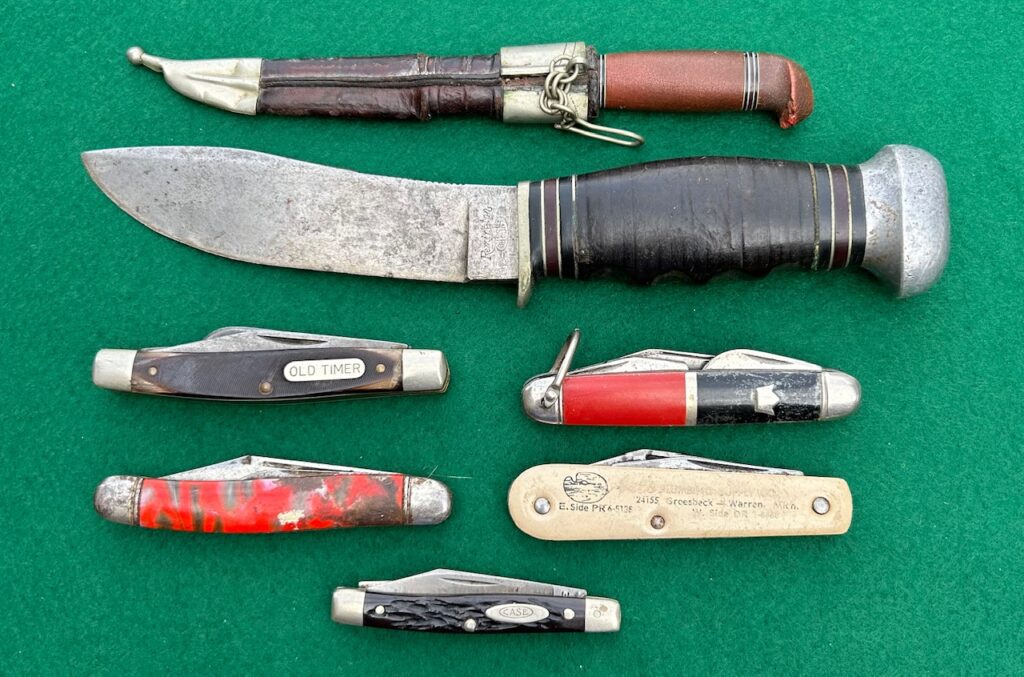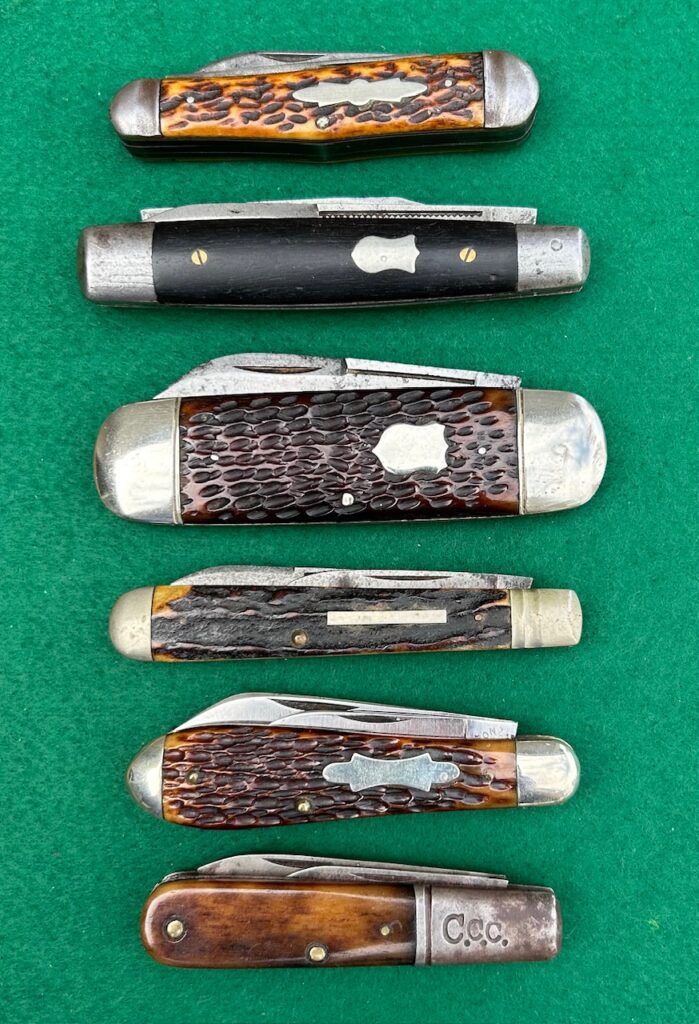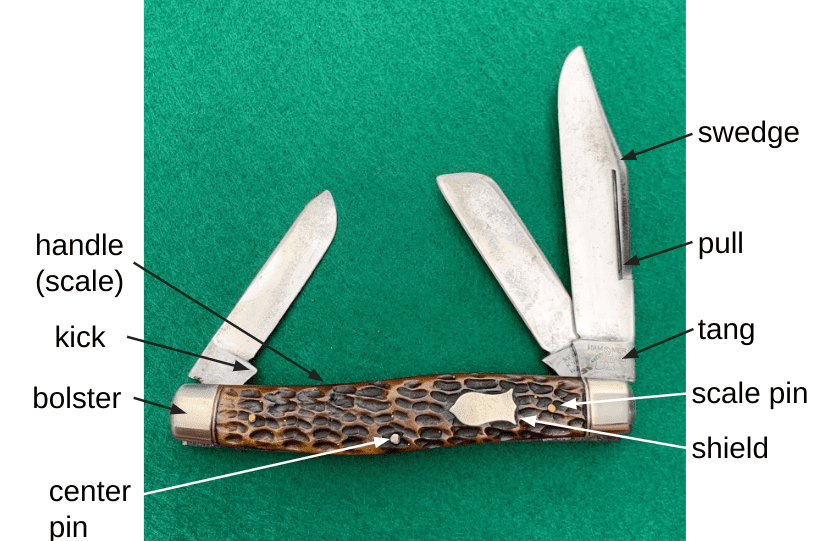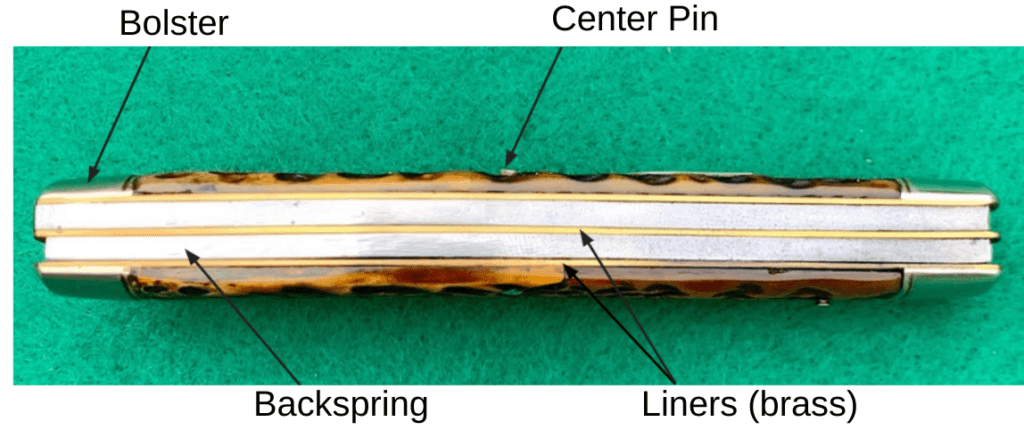Guide to Collecting Pocket Knives, part I
Thanks for checking out my guide to collecting old pocket knives. I hope you find this information useful and enjoy the content. The following may contain affiliate links.
Introduction to Collecting Pocket Knives
So you want to start collecting old pocket knives?
Chances are you already have a few (or a bunch!); perhaps a couple given to you by your father or grandfather. Or you found a few treasures at the local flea market or antique mall.
Either way, I hope this guide is a useful tool no matter where you find yourself in the knife collecting journey. My goal was to make something you can return to it as a useful resource. Here are some topics I that I address in this guide:
- Introduction & Pocket Knife Vocabulary
- Pocket Knife Patterns
- Blade Shapes
- Handle Materials
- Cleaning & Storing old pocket knives
- Where to buy old pocket knives
Your First Knives
The first knives in a collection were most likely given to us by Grandpa or Dad. Perhaps they were handed down after someone passed away or you purchased them at a local flea market.
My first pocket knives were those given to me by my Grandfather who found some old knives while rummaging through his basement. They included a small Imperial camp knife, a Schrade Walden Old Timer and a Remington/ Pal fixed blade scout knife. These knives are still in my collection and have great sentimental value. Do you have a similar experience?

My collection today is very different from what it looked like ten years ago. In most cases, the focus of a knife collection will shift over the years as we run into different knives that spark our interest and point us in different directions. Your budget will change over time as well. Over the years I have sold knives I thought I would never part with. I have also added knives that were not even on my radar a few months ago.

One nice thing about collecting knives is that they have historically held, or even increased in value over time. They can easily be sold or traded if you so choose.
One idea to increase the quality of your collection is to sell three to five average knives and buy one very nice knife with the proceeds of your sales.
This way, you are creating a collection that stresses quality over quantity.
Pocket Knife Vocabulary
Here are some common pocket knife vocabulary words you should be familiar with:


- Backspring – a small piece of steel on the bottom of the knife that helps the blade snap open and shut
- Bolster – metal piece that cap the ends of a pocket knife
- Handle (or scales) – natural or synthetic material that
- Kick – found at the base of the blade, this provides a stop when the blade closes and impacts the backspring
- Liner – brass or steel sheets that the handles and bolsters attach to
- Pins (or rivets)- these small round metal parts attach the scales to the liners and provide a place where the backspring can pivot
- Pull (or nail nick) – long or short, these are small slots for your fingernails to guide in opening the blade
- Shield – decorative badge inlaid on the handle that marks the front side of the knife
- Swedge – opposite side of the sharpened end can be ground down near the tip. This helps to narrowing the blade for precision cutting. Also reduces the weight of the blade.
- Tang – flat surface at the base of the blade where the makers mark is typically found
Part II – Pocket Knife Patterns and Styles
———-
